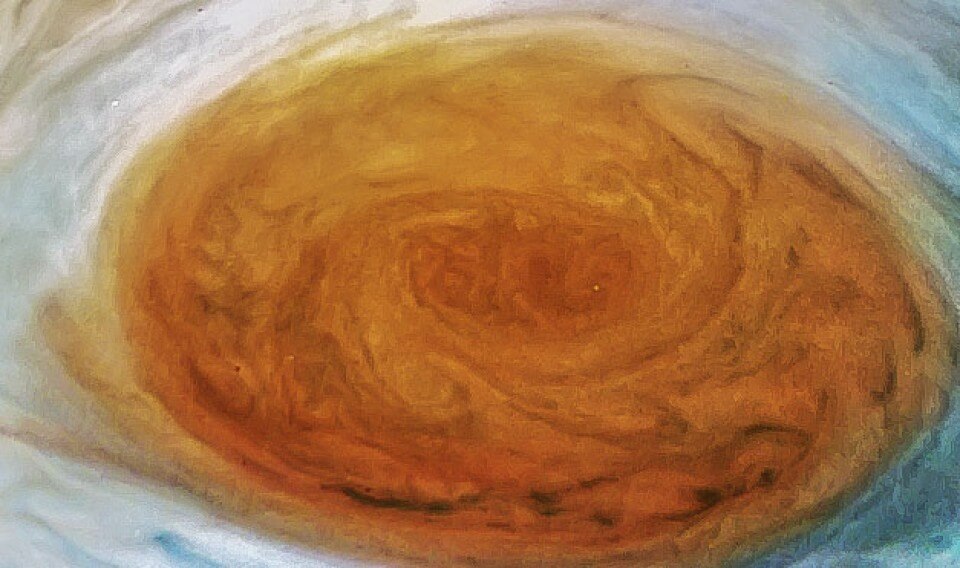Earlier this week, on
Monday, July 10th
, the
Juno
mission accomplished an historic feet as it passed directly over Jupiter's most famous feature – the
Great Red Spot
. This massive anticyclonic storm has been raging for centuries, and
Juno's
scheduled flyby was the closest any mission has ever come to it. It all took place at 7:06 p.m. PDT (11:06 p.m. EDT), just days after the probe celebrated its first year of orbiting the planet.
And today -
Wednesday, July 12th
, a few days ahead of schedule - NASA began releasing the pics that
Juno
snapped with its imager - the
JunoCam
- to the public. As part of the missions' seventh orbit around the planet (perijove 7) these images are the closest and most detailed look of Jupiter's Great Red Spot to date. And as you can clearly see by going to the
JunoCam website
, the pictures are a sight to behold!
And as always, citizen scientists and amateur astronomers are already busy processing the images. This level of public involvement in a NASA mission is something quite new. Prior to every perijove, NASA has asked for public input on what features they would like to see imaged. These Points of Interest (POIs), as they are called, are then photographed, and the public has had the option of helping to process them for public consumption.
[caption id="attachment_136424" align="aligncenter" width="580"]
"Great Red Spot from P7 Flyover". Credit: NASA/SwRI/MSSS/Jason Major © public domain
[/caption]
As Scott Bolton - the associate VP at the
Southwest Research Institute
(SwRI) and the Principle Investigator (PI) of the
Juno
mission - said in a NASA
press release
, "For generations people from all over the world and all walks of life have marveled over the Great Red Spot. Now we are finally going to see what this storm looks like up close and personal." And in just the past two days, several processed images have already come in.
Consider the images that were processed by Jason Major - an amateur astronomer and graphic designer who created the astronomy website
Lights in the Dark
. In the image above (his own work), we see a cropped version of the
original JunoCam image
in order to put Jupiter's Great Red Spot center-frame. It was then color-adjusted and enhanced to mark the boundaries of the storm's "eye" and the swirling clouds that surround it more clearly.
On his website, Major described the method he used to bring this image to life:
[caption id="attachment_136429" align="aligncenter" width="580"]
Wide-frame shot of the Great Red Spot, processed to show contrast between the storm and Jupiter's clouds. Credit: NASA/SwRI/MSSS/Jason Major © public domain
[/caption]
Above is another one of Major's processed images, which was released shortly after the first one. This image shows the GRS in a larger context, using the full JunoCam image, and similarly processed to show contrasts. The same image was processed and submitted to the Juno website by amateur astronomers
Amadeo Bellotti
and
Oliver Jenkins
- though their submissions are admittedly less clear and colorful than Major's work.
Other images include "
Juno Eye
", a close up of Jupiter's northern hemisphere that was processed by our good friend,
Kevin M. Gill
. Shown below, this image is a slight departure from the others (which focused intently on Jupiter's Great Red Spot) to capture a close-up of the swirls in Jupiter's northern polar atmosphere. Much like the GRS, these swirls are eddies that are created by Jupiter's extremely high winds.
The
Juno
mission reached perijove - i.e. the point in its orbit where it is closest to Jupiter's center - on July 10th at 6:55 p.m. PDT (9:55 p.m. EDT). At this time, it was about 3,500 km (2,200 mi) above Jupiter's cloud tops. Eleven minutes and 33 seconds later, it was passing directly over the anticyclonic storm at a distance of about 9,000 km (5,600 mi); at which time, all eight of its instruments were trained on the feature.
In addition to the stunning array of images
Juno
has sent back, its suite of scientific instruments have gathered volumes of data on this gas giant. In fact, the early science results from the mission have shown just how turbulent and violent Jupiter's atmosphere is, and revealed things about its complex interior structure, polar aurorae, its gravity and its magnetic field.
[caption id="attachment_136430" align="aligncenter" width="580"]
"Juno Eye". Credit : NASA/JPL-Caltech/MSSS/SwRI/©Kevin M. Gill
[/caption]
The
Juno
mission reached Jupiter on
July 5th, 2016
, becoming the second probe in history to establish orbit around the planet. By the time the mission is scheduled to end in 2018 (barring any mission extensions), scientist hope to have learned a great deal about the planet's structure and history of formation.
Given that this knowledge is likely to reveal things about the early history and formation of the Solar System, the payoffs from this mission are sure to be felt for many years to come after it is decommissioned.
In the meantime, you can check out all the processed images by going to the
JunoCam sight
, which is being regularly updated with new photos from Perijove 7!
Further Reading:
,
,
*Lights in the Dark*
 Universe Today
Universe Today
